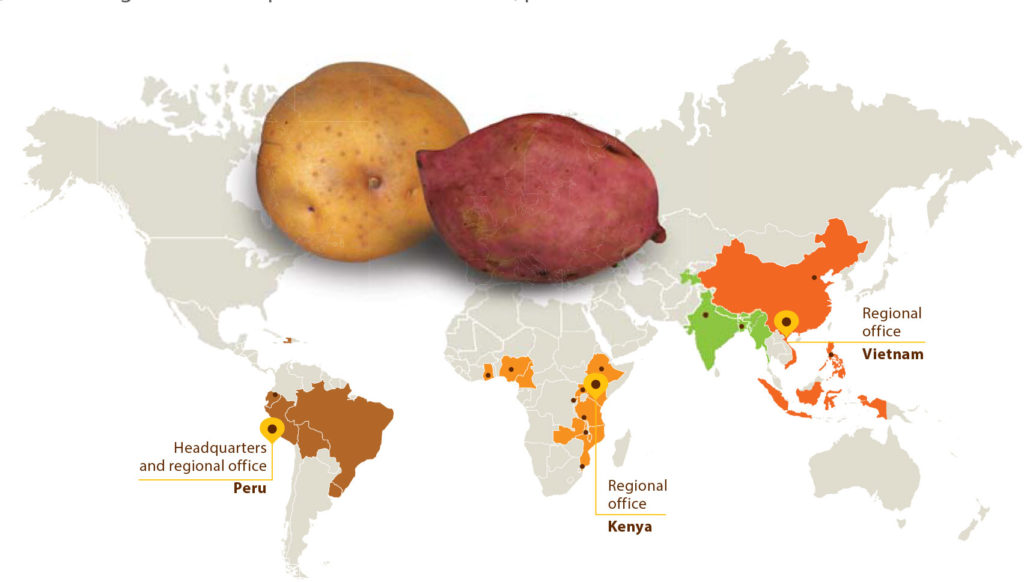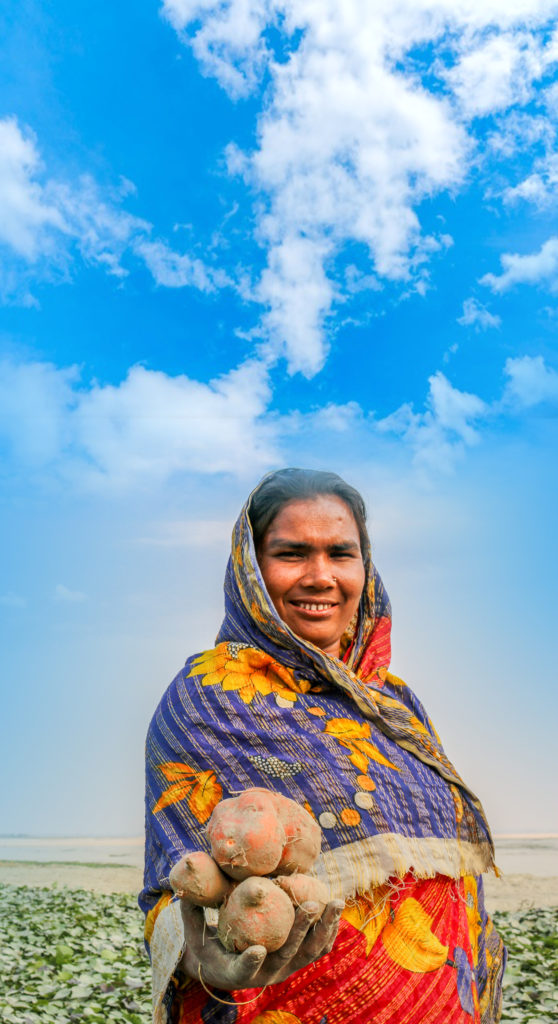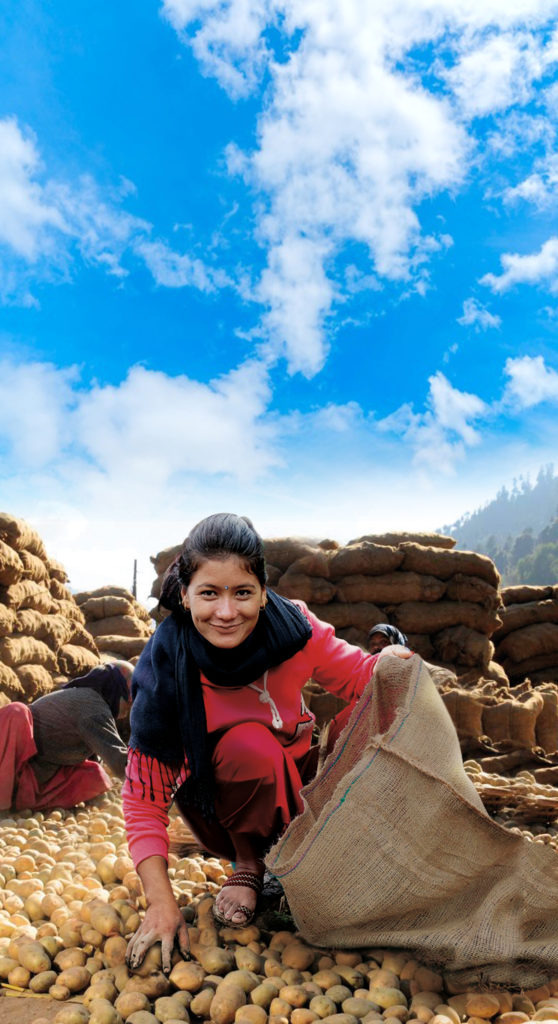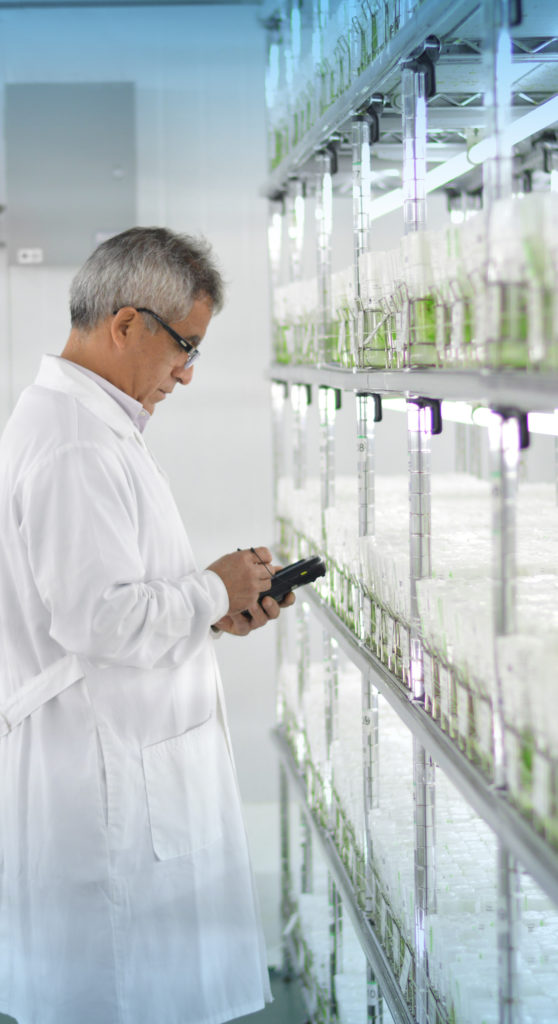With more than 45 years of research-for-development work in potato and sweetpotato, the International Potato Center (CIP) has contributed to greater food and nutrition security, economic growth and prosperity. CIP breeders and plant scientists work with local partners and farmers to develop and manage potato and sweetpotato varieties that are more resilient to the extremes of climate, pests and diseases, produce higher yields, and have better nutritional and culinary qualities.
Our social, nutrition and food scientists bring the same dedication to helping rural farmers and communities understand, adopt, and profit from agricultural and postharvest technologies and best practices tailored for different agro-ecologies, production systems and value chains. In partnership with governments, businesses and international organizations, we are scaling these science innovations and approaches, putting the tools for better harvests, incomes and health into the hands of millions of farmers, processors, traders and their communities.
Tapping the potential of root and tuber crops
In 2018, an estimated 821 million people around the world were chronically undernourished. Farmers in the world’s poorest regions struggle to produce enough food and earn decent incomes due to a lack of high-yielding varieties and quality seed, poor agronomic practices, overdependence on monocropping and barriers to market access. Population growth and climate change are making the challenges of nourishing the planet even more daunting.
In response to the agricultural development challenges of the 21st century, CIP has organized its mission and activities around three programs. Two of those programs focus on R&D to enhance the ability of sweetpotato and potato to improve the food and nutrition security, livelihoods and climate resilience of smallholder farmers and other value chain actors in different agro-ecologies worldwide. To guide our work and measure its value, we have set 10-year targets with a timeline to ensure our innovations are widely disseminated, benefiting increasing numbers of people through Africa, Asia and Latin America. The third program focuses on the CIP genebank, which safeguards collections of sweetpotato, potato and Andean root and tuber crop diversity that form the foundation of CIP’s R&D operations and results-oriented initiatives.
CIP also leads the CGIAR Research Program on Roots, Tubers and Bananas (RTB), a collaboration of various research centers that seeks to harness the untapped potential of potato, sweetpotato, banana, cassava and yam to improve the food security, nutrition, income, climate change resilience and gender equity of smallholders in the developing world. The cross-crop learning and partnerships facilitated by RTB expand CIP’s scope and effectiveness.
CIP INSTITUTIONAL GOALS

Improved food and nutritional
security through the introduction
of healthier diets to vulnerable
populations (women, young and
displaced people)

Increased livelihood and
employment opportunities
and wide-scale development
of inclusive value chains in
rural and urban areas

Sustainable intensification
and diversification of
agri-food systems through
climate-resilient and
biodiverse agriculture
Sweetpotato agri-food systems
Enabling at least 15 million resource‐poor households in Africa and Asia to improve the quality of their diets and raise their crop incomes by 15% by 2023.
In developing countries, vitamin A deficiency (VAD) is one of the most harmful forms of undernourishment. It weakens immunity, leads to stunting and blindness in children, and increases mortality. Almost 165 million children under 5 years suffer from VAD, primarily in Africa and Asia.
In 2016, three CIP scientists received the World Food Prize in recognition of their role in using biofortified crop to enhance nutritional outcomes. By 2019, CIP and partners had developed and disseminated more than 130 biofortified, vitamin A-rich OFSP varieties in Africa and Asia, helping to raise the nutritional status and, to a lesser extent, the incomes of more than five million households. Biofortification has focused on increasing the pro-vitamin A content through conventional breeding, boosting the availability of vitamin A for farm families and consumers. By promoting OFSP nutrition education at the community level, CIP-led work has made it a cost-effective and sustainable source of vitamin A for vulnerable populations, especially women and young children. By working with large food processors and fresh root traders in Africa, we have also facilitated the development of new value chains for OFSP, and income generating opportunities for women and young people.
Potato agri-food systems
Improving productivity and farm incomes of more than 7 million households in Africa, Asia and Latin America with early-maturing, market-preferred and biofortified potatoes and high-quality seed potato by 2023.
In response to the need for healthier, more resilient, potatoes, CIP breeders are developing early-maturing, stress-tolerant and disease-resistant potato varieties desired by consumers and processors alike. Early maturing potatoes provide more flexibility for cultivation, allowing the crop to be grown during fallow periods of cereal-based systems, which, relieves pressure on scarce land and water resources, and improves farm incomes. CIP has also made significant advances in developing biofortified potatoes with elevated levels of iron and zinc to contribute to global efforts to end malnutrition.
For these potatoes to improve nutrition and livelihoods, more efficient seed systems are needed to deploy quality seed tubers for farmers to plant. Smallholder farmers in developing countries primarily plant seed they saved from earlier harvests which facilitates the spread of viruses and reduces yields. CIP scientists have developed rapid seed multiplication techniques to speed up production of high-quality seed potatoes for improved varieties and leveraged private sector investment to supply that seed to a growing number of farmers. Working closely with local R&D partners, CIP conducts adaptive research on best practices for on-farm seed quality management, integrated crop and postharvest management, and value chain approaches. More than two million farmers in Africa and Asia who have planted quality seed, improved varieties and adopted good practices—provided directly or indirectly by CIP—have seen their yields and market prices rise significantly. In China alone, a CIP-bred late blight disease resistant potato variety, Cooperation 88, has, between 1996 and 2015, brought an estimated USD 2.8–3.7 billion in extra income to farmers and consumers in Yunnan province.
Biodiversity for the future
Ex situ and in situ conservation of genetic diversity is critical for preserving and monitoring changes in the world’s plant genetic resources for food and agriculture. Lost genetic diversity—particularly of crop wild relatives—would hinder crop breeders and researchers from developing varieties that enhance farmers’ resilience and ability to produce enough nutritious food for the world.
The CIP genebank conserves in vitro the world’s most extensive collections of potato, sweetpotato and their wild relatives, as well as the only secure global collection of Andean root and tuber crops—the genetic, physiological and biochemical attributes of which scientists have just begun to explore. CIP safeguards that biodiversity in trust for humanity to ensure its availability for breeding and other uses now and in the future. We also work closely with Andean communities on in situ conservation of potato diversity and have repatriated thousands of accessions previously lost to them due to disease or climate change.
The genebank serves as a model through its advanced research, public database and interactive use of collections. CIP works with other genebanks to ensure that clean material from its collections is backed-up, preventing the loss of diversity.
Safeguarding crop biodiversity plays a critical role in facilitating the development and release of new varieties for farmers and consumers across the globe. For instance, the genebank shares 5,000–6,000 germplasm samples each year with scientists around the world, contributing to the development of more nutritious, productive and climate resilient varieties.




